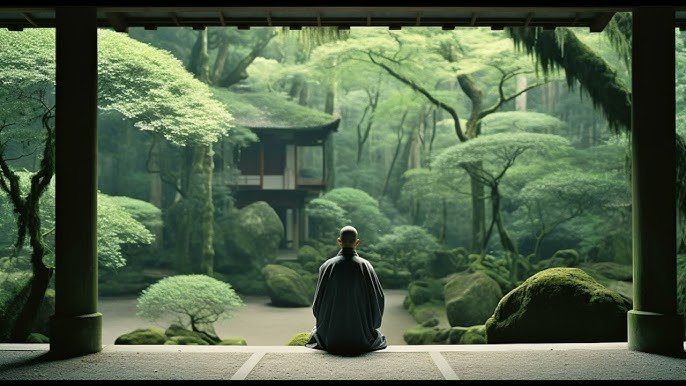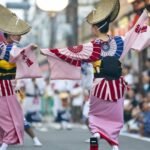The Influence of Zen Buddhism on Japanese Art and Culture
Zen Buddhism, a branch of Mahayana Buddhism that emphasizes meditation and direct experience of enlightenment, has had a profound influence on Japanese art and culture. Since its introduction to Japan in the 12th century, Zen has shaped various aspects of Japanese life, including its artistic expressions, cultural practices, and philosophies. This post explores how Zen Buddhism has impacted Japanese art and culture, offering insights into its enduring legacy.
1. The Origins and Principles of Zen Buddhism
Zen Buddhism, originating from China and known as Chan in its earlier form, arrived in Japan during the Kamakura period (1185–1333). Zen emphasizes direct experience and personal enlightenment through meditation (zazen), simplicity, and mindfulness. Key principles include the importance of self-discipline, the quest for inner peace, and the appreciation of the present moment.
These principles have significantly influenced Japanese culture, leading to the development of various art forms and practices that embody the essence of Zen philosophy.

2. Zen Influence on Japanese Gardens
Japanese gardens are one of the most direct expressions of Zen principles. The design of Zen gardens, or karesansui (dry landscape gardens), reflects a deep understanding of Zen philosophy. These gardens often feature minimalistic elements such as rocks, gravel, and sparse vegetation, intended to create a tranquil environment conducive to meditation and contemplation.
- Rock Gardens: The arrangement of rocks and gravel in Zen gardens is symbolic, representing natural landscapes and the cosmos. Raking the gravel creates patterns that mimic the flow of water, emphasizing the Zen concept of the impermanence of life.
- Tea Gardens: Tea gardens (roji) are designed to prepare visitors for the tea ceremony, embodying the Zen ideals of simplicity and mindfulness. Pathways and features are carefully planned to guide visitors through a meditative experience.
3. Zen and Japanese Architecture
Zen Buddhism has also left its mark on Japanese architecture, particularly in the design of temples, monasteries, and traditional homes. Zen architecture is characterized by its simplicity, functionality, and use of natural materials.
- Zen Temples: Zen temples, or sodo, are designed to facilitate meditation and spiritual practice. Features such as open spaces, tatami mat flooring, and wooden structures are intended to create a serene and uncluttered environment.
- Traditional Homes: The minimalist approach of Zen is reflected in traditional Japanese homes, which emphasize a harmonious relationship between indoor and outdoor spaces. Sliding doors (shoji), tatami mats, and simple furnishings are all elements that promote tranquility and mindfulness.
4. Zen Aesthetics in Japanese Art
Zen Buddhism has profoundly influenced various forms of Japanese art, including painting, calligraphy, and ceramics. The emphasis on simplicity, spontaneity, and the expression of inner experience is evident in these artistic expressions.
- Zen Paintings: Zen-inspired paintings often feature minimalistic brush strokes and abstract forms, capturing the essence of natural beauty and the artist’s inner state. The practice of sumi-e (ink wash painting) reflects Zen ideals through its emphasis on simplicity and spontaneity.
- Zen Calligraphy: Japanese calligraphy, or shodo, is deeply influenced by Zen principles. The art of brush writing emphasizes fluidity, balance, and the expression of the writer’s emotions and spiritual state.
- Zen Ceramics: Japanese ceramics, such as those from the Raku tradition, are often associated with Zen aesthetics. The focus on natural forms, imperfections, and the spontaneity of the firing process reflects Zen values.
5. The Zen Influence on Japanese Tea Ceremony
The Japanese tea ceremony (chanoyu) is a ritual deeply rooted in Zen principles. The ceremony emphasizes simplicity, mindfulness, and the appreciation of the present moment.
- Ritual and Practice: The tea ceremony involves precise movements, the careful preparation of matcha (powdered green tea), and a focus on the aesthetics of the tea utensils and setting. Each element of the ceremony is designed to create a harmonious and meditative experience.
- Wabi-Sabi: The concept of wabi-sabi, which finds beauty in imperfection and impermanence, is central to the tea ceremony. This reflects Zen’s emphasis on accepting the fleeting nature of life and finding beauty in simplicity.
6. Zen Philosophy and Modern Japanese Culture
Zen Buddhism continues to influence modern Japanese culture, including contemporary art, literature, and lifestyle. The principles of Zen—such as mindfulness, simplicity, and the pursuit of inner peace—are embraced by many aspects of modern life in Japan.
- Mindfulness Practices: The practice of mindfulness, which is rooted in Zen meditation, has become popular in Japan and beyond. Many people incorporate Zen-inspired mindfulness techniques into their daily routines to manage stress and enhance their overall well-being.
- Cultural Events: Zen principles are also evident in cultural events and festivals that celebrate traditional Japanese arts and crafts. These events often highlight the enduring influence of Zen on Japanese culture.
Conclusion
The influence of Zen Buddhism on Japanese art and culture is profound and far-reaching. From the serene design of Zen gardens and architecture to the minimalist aesthetics of Japanese art and the ritualistic beauty of the tea ceremony, Zen principles have shaped a distinctive cultural legacy. As Zen continues to resonate with contemporary audiences, its impact remains a vital and enriching aspect of Japanese culture, offering timeless insights into simplicity, mindfulness, and the pursuit of inner peace.



